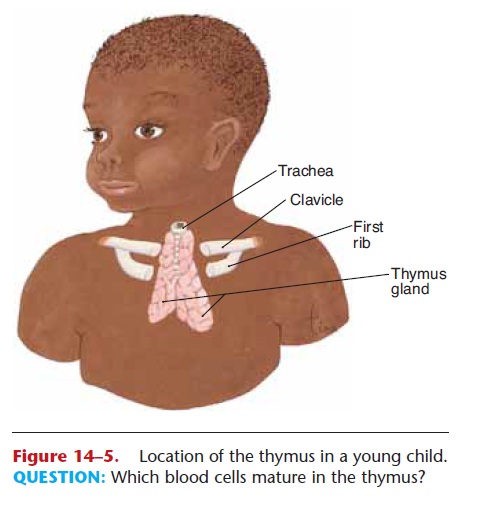Chapter: Essentials of Anatomy and Physiology: The Lymphatic System and Immunity
Thymus
THYMUS
The thymus is located inferior to the thyroid gland. In the fetus and infant, the thymus is large and extends under the sternum (Fig. 14–5). With increasing age, the thymus shrinks, and relatively little thymus tissue is found in adults, though it is still active.

The stem cells of the thymus produce T lympho-cytes or T cells; their functions are discussed in the next section. Thymic hormones are necessary for what may be called “immunological competence.” To be competent means to be able to do something well. The thymic hormones enable the T cells to participate in the recognition of foreign antigens and to provide immunity. This capability of T cells is established early in life and then is perpetuated by the lympho cytes themselves. The newborn’s immune system is not yet fully mature, and infants are more susceptible to certain infections than are older children and adults. Usually by the age of 2 years, the immune sys-tem matures and becomes fully functional. This is why some vaccines, such as the measles vaccine, are not recommended for infants younger than 15 to 18 months of age. Their immune systems are not mature enough to respond strongly to the vaccine, and the protection provided by the vaccine may be incom-plete.
Related Topics